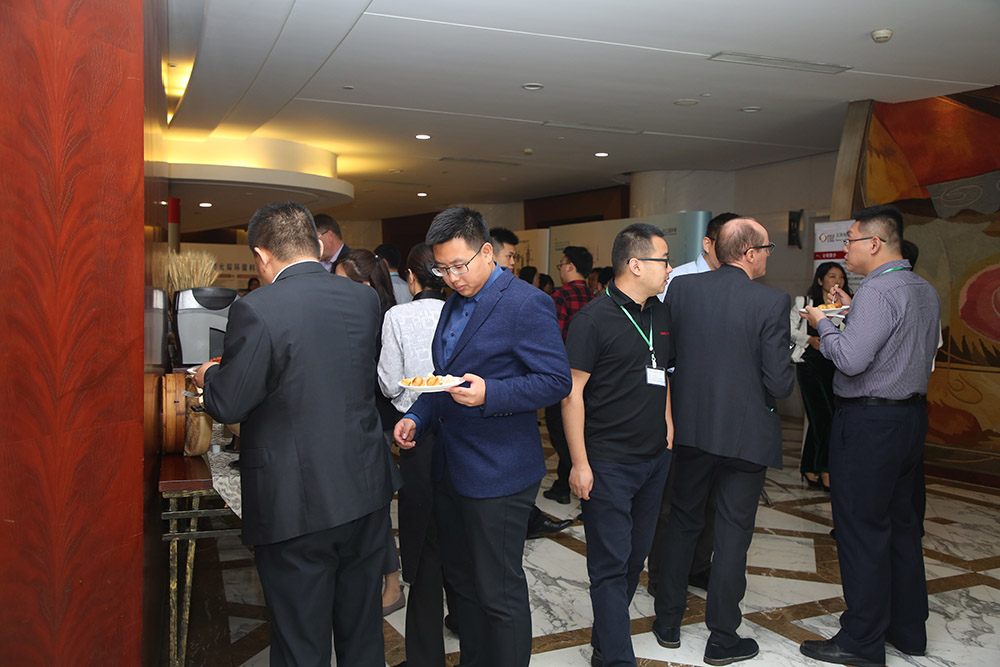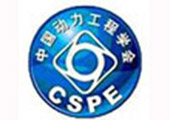2nd Asia Green Glassmaking Plant Summit 2021 Event Background
On June 28, 2019, the China Building Materials Federation £¨CBMF£©organized an industry standard review meeting for the ¡°Glass Industry Green Factory Evaluation Guidelines¡± in Beijing.Green and intelligent are the main directions for future development.Based on sufficient research and verification, the standard puts forward specific requirements for green glassmaking plant industry evaluation from multiple dimensions such as infrastructure, management system, energy resource input, product, environmental emissions and comprehensive performance;Meanwhile, the standard combines the characteristics of the glass industry, and puts forward the indicators, requirements & methods for comprehensive, advanced operability of environmental green development in terms of environmental emissions, comprehensive utilization of resources, and energy consumption.The standards have reached the international advanced level.In the follow-up work, the glass industry will accelerate the formulation of the ¡°Glass Industry Green Factory Evaluation Requirements¡±, which will stipulate the specific scoring rules and terms, in accordance with the evaluation index system tipulated in the Guidelines, utilize the function of standards guide companies to develop green factories and evaluattion completely,guide glass industry enterprises to accelerate the green factories establishment, improve the overall green and low carbon development level,achieve high quality development.
On July 11, 2019, in order to do a good job in the "14th five-year" industrial energy-saving ideas, the department of energy and comprehensive utilization of the MIIT organized a survey on energy-saving work in the building materials industry, focusing on the flat glass industry, and researching the next step of energy-saving measures and work focus.
On July 12, 2018, in order to implement the PRC Environmental Protection and Air Pollution Prevention and Control Law,complete the national air pollutant emission standards and improve the air environment quality, the MEE organized the drafting of national environmental protection standard "Domestic Glass Industry Pollutant Emission Standards (Draft)" "Fiberglass and Related Products Industry Pollutant Emission Standards (Draft)".
On July 1, 2019, the MEE, NDRC, MIIT, and MOF issued the "Industrial Kiln Air Pollution Comprehensive Treatment Program" (Env Air [2019] No. 56) document, which requires the active promotion of flat glass industry pollution treatment upgrade and retrofit.Flat glass enterprises in key areas should eliminate the desox and denoxflue gas bypass gradually or set up backup desox and denox facilities,establish and improve the flat glass industry flue gas monitoring system.Strengthen building automatic monitoring system for key pollution sources. The elevated resources of exhaust vent height more than 45 meters is included in the key pollutant emission organizations list, urge the flat glass enterprises to install automatic monitoring facilities for flue gas emissions.Complete the air pollutant emission standards for domestic glass and glass fiber industries formulation before the end of June 2020.Accelerate the revision of the comprehensive air pollutants emission standards.Encourage local governments to revise local emission standards for relevant industries.Flat glass and fiberglass kiln should be equipped with high-efficiency dedusting facilities such as ESP, bag filter and electrostatic-fabric integrated precipitator,limestone gypsum desox and SCR facilities.Encourage fiberglass companies use oxygen-enriched combustion or oxy fuel combustion mode.Other domestic glass melting furnaces (except all-electric melting and all-oxygen burning furnaces) shall be equipped with SCR denox facilities;The melting furnace with coal, petroleum coke, heavy oil, etc. as fuel should be equipped with bag filter dust removal facilities,high-efficiency desox facilities such as limestone gypsum.Dedusting and desox facilities shall be equipped in natural gas-fired furnace of flue gas particulate matter and sulfur dioxide that cannot meet the standards.The state has put forward higher requirements for the prevention and control of air pollution in the glass industry.In conjunction with the current national environmental management requirements, the relevant state administrative departments have proposed the formulation of the "Glass Industry Air Pollutant Emission Standards".The new standard will cover all sub-sectors of the glass industry by integrating current emission standards such as flat glass and electronic glass.The new standard is aimed at the actual situation of the glass industry by formulating stationary and fugitive emission control requirements,refining environmental management requirements,it will help further promote the technological progress and sustainable development of the glass industry.Compared with flat glass, glass fiber and other industries, the domestic glass industry (contatiner glass, glassware, etc.) air pollution prevention and control work started late,flue gas treatment technology has become more mature after more than ten years exploration.To meet the needs of the new environmental management work, the "Technical Specifications for Domestic Glass Industry Flue Gas Treatment" was formulated.It will help accelerate the pace of structural adjustment of the domestic glass industry, eliminate outdated process equipment, achieve total control, strengthen technological innovation, and promote clean production,sustainable, stable and healthy development for the domestic glass industry,by standardizing the domestic glass industry flue gas treatment engineering design, construction and operation and maintenance.The comprehensive management system for air pollution in the glass industry will be improved,air pollutants are fully emitted meeting the standard, which will contribute to the continuous improvement of environmental air quality and the industry high-quality development,by regulating the flue gas treatment engineering of domestic glass industry design, construction and operation and maintenance.
On July 3, 2019, China Building Glass and Industrial Glass Association formulated and issued the ¡°Implementation Plan for the Prevention and Control of Atmospheric Pollution in the Flat Glass Industry¡±.
On May 9, 2017, the Environmental Protection Department of Jiangsu Province issued a notice on the implementation of the deep reduction of nitrogen oxides in the non-power industry.The notice requires The NOx emission of the glass industry is not higher than 350mg/m3 before June 1, 2020. Slightly higher than the "flat glass industry air pollutant emission standards" (GB 26453-2011) special emission "modification" limit 400mg / m3.
On June 28, 2019, the Guangdong Provincial Department of Eco-Environment issued the document ¡°Emission Standards for Air Pollutants in the Glass Industry¡± (DB 44/2159-2019). The standard was implemented on August 1, 2019,it is applicable to existing flat glass electronic glass manufacturing enterprises production facilities emission management of particulate matter, sulfur dioxide, and nitrogen oxides in atmospheric pollutants.Since July 1, 2020, the emission limits of three pollutants such as particulate matter, sulfur dioxide and nitrogen oxides specified in the new standard are 30mg/m3, 280mg/m3 and 550mg/m3, respectively.
On October 9, 2019, the Department of Ecological Environment of Hebei Province sought the ultra-low emission standard of air pollutants in the flat glass industry.
On June 24, 2020, the Ministry of Industry and Information Technology formulated the "Glass Fiber Industry Standard Requirement". In order to promote the industrial structure transformation and upgrading,lead the industry high-quality development. Encourage advanced kiln melting technology and heat preservation and energy saving technology utilization for the glass ball kiln production line.Encourage advanced technology and equipment such as split-drawing, large-volume packaging, and the intelligent centralized control system of raw material balls, sizing agent and furnace temperature for the glass fiber drawing production line with platinum crucible method.Encourage advanced technologies and equipment such as pure oxygen combustion, electric boosting, waste heat utilization, waste wire recycling, intelligent production and logistics for the glass fiber tank kiln method drawing production line.Enterprises should strictly abide by environmental protection laws and regulations, implement clean production, and be equipped with environmental protection facilities such as dust removal, desox, denox, waste water recycling, and waste silk recycling;The project should strictly implement the environmental impact assessment system and the "three simultaneous" system.Strengthen the control of fugitive emissions. The emission of air pollutants shall meet the requirements of national or local pollutant emission standards.
Key Features
Gain latest information on energy efficiency and emission policies across the Asian countries
Understand the economics of green glassmaking in the region
Learn what investors need to make a project bankable
Debate challenge and opportunities with investors,funders and advisors
Assessing how green glassmaking markets are developing in the region
Assess new technologies in green glassmaking indutry
Assess the market opportunities for advanced glassmaking technologies and their outputs
Debate the future of the emerging green glassmaking market with industry leaders
Benefit from technical expertise insight from some of the industry¡¯s leading technology providers
Take part in robust discussions and share best-practice with senior-level opinion-formers
Network and do business with the leading green glassmaking projects owners in the region
Discover new commercial opportunities in 2020 and beyond
Position your company at the forefront of the green glassmaking industry globally and Asia
Previous Event Onsite Photo

Asia Green Cement Manufacturing Summit 2021 Event Background
In order to implement the national cement industry's comprehensive promotion of energy conservation and emission reduction standards congress spirit, according to the requirements of the federation's "Notice on the preparation of the "13th Five-Year Plan for Energy Conservation and Emission Reduction Standards and Implementation Plan",in conjunction with the requirements of the relevant federation's key work in 2017, the China Cement Association completed the preparation of the ¡°Work Plan and Implementation Plan for the Energy Conservation and Emission Reduction Standards for the 13th Five-Year Plan for the Cement Industry¡±.It made a top-level design for the ¡°13th Five-Year Plan¡± energy conservation and emission reduction work in the cement industry, carried out institutional and sub-annual work arrangements for the long-term and arduous task of energy saving and emission reduction in the cement industry, ensuring that energy conservation and emission reduction work is carried out step by step, long-term and consistently.
On September 27, 2017, the ¡°Technical Guidelines for Energy Conservation Monitoring and Implementation Guidelines for Cement Industry¡± completed by the Energy Conservation Department of the MIIT was reviewed and accepted.The ¡°Guideline¡± targets cement enterprises, implements energy consumption limit standards for unit products, ladder price policy, backward elimination systems, enforces energy efficiency mandatory standards for energy-using equipment (products), energy measurement management systems, energy consumption statistics systems, and establishes energy-saving target responsibility system, energy efficiency level, energy-saving monitoring on eight aspects of standard compliance activities.It analyzes the main energy-consuming equipment in the cement industry, the main types of energy consumption,methods of statistical measurement, adoption of the folding coefficient, energy consumption accounting of each major process, and the mandatory standard benchmarking method from the technical level; Clarified the main contents, technical specifications, methods and monitoring results of the energy conservation of the cement industry;The verification instruments,procedures and results processing methods were unified.At the same time, the guideline also provides a rich and detailed case for energy conservation supervision staff'sreference.
National environmental protection work in 2018 puts more stringent emission control requirements on the cement industry.From March 1st, ¡°2+26¡± cities will implement special emission limits for air pollutants, Zhejiang and other provinces require special emission limit modifications.The MEE has put forward more clear control requirements for fugitive emissions, and also higher requirements for local environmental protection departments to use pollution discharge permits to implement control and management measures.
On July 1, 2019, the MEE, NDRC, MIIT, and the MOF issued the "Industrial Kiln Air Pollution Comprehensive Treatment Program", the Env Air [2019] No. 56 document,the document requires active promotion of upgrading and retrofit of pollution control in the cement industry, encourages cement enterprises to implement full-process pollution deep treatment, and installs and operates automatic monitoring and management in strict accordance with the regulations on discharge permit management.Cement clinker kiln should be equipped with low-nox burners, using staged combustion technology, and denox facilities such as selective non-catalytic reduction (SNCR) and selective catalytic reduction (SCR).High efficient dust removal facilities such as laminating bags at the kiln head and end;Desox facilities shall be provided for the sulphur dioxide flue gas that cannot meet the standard discharge.
On July 5, 2019, the China Building Materials Federation issued the "2019 Implementation Plan for the Prevention and Control of Air Pollution in the Cement Industry". In 2019, the energy consumption and pollutant emissions per unit of the cement industry were fully met, and the energy consumption per unit of product reached an advanced value not less than 80%.The proportion of production lines that have reached the international leading level has reached 30%;On the basis of pollutant emission standards, the major pollutants emissions in 2+26 cities reached by the end of 2019:particulate matter ¡Ü 10mg / Nm3; nitrogen oxides ¡Ü 100 mg / Nm3; sulfur dioxide: ¡Ü 50 mg / Nm3;Cement enterprises in the Beijing-Tianjin-Hebei region, the surrounding areas, the Yangtze River Delta region, and the Fenwei Plain, the main pollutants emisiions reached by the end of 2019: particulate matter ¡Ü 10mg/Nm3; nitrogen oxides ¡Ü 200 mg/Nm3; sulfur dioxide: ¡Ü 50 mg/Nm3 .Other regions reached special emission limits by the end of 2020.To achieve pollutant emission and carbon emission reduction, it is estimated that sulfur dioxide emissions will be reduced by 28,000 tons, nitrogen oxides will be 40,000 tons, dust will be 31,000 tons, and carbon emissions will be reduced by about 30 million tons.
Local governments have initiated relevant policy development and implementation to promote implementation.
On May 9, 2017, the Environmental Protection Department of Jiangsu Province issued a notice on the implementation of the deep reduction of nitrogen oxides in the non-power industry.The notice requires that the NOx emissions from the cement industry be further controlled on the basis of non-power industry emission standards, and the total amount of pollutant emissions will be greatly reduced.The cement industry's nitrogen oxide emissions are not higher than 100 mg/m3 before June 1, 2019.Compared with the original standard GB4915-2013 "Cement Industry Air Pollutant Emission Standard", the special emission limit is 320mg/m3, which is the largest tightenning.
In April 2018, Hebei Province issued the "Cement Industry Air Pollutant Emission Standards (Draft)".Cement kiln and kiln tail implementation standards: particulate matter 10mg/m3, sulfur dioxide 50mg/m3, nitrogen oxide 150mg/m3.Existing enterprises will still implement DB13/2167-2015 before December 31, 2019, and implement the new maximum allowable emission concentration of air pollutants from January 1, 2020.From the date of implementation of this standard, the newly-built enterprise will implement the new maximum allowable emission concentration of air pollutants.
On October 9, 2019, the Department of Ecology and Environment of Hebei Province sought the ¡°Ultra-low Emission Standard for Air Pollutants in the Cement Industry (Second Draft)¡±.
On April 4, 2019, the Shanxi Provincial Eco-Environment Department issued a letter on the solicitation of the ¡°Emission Standards for Air Pollutants in the Cement Industry of Shanxi Province (Draft )¡±.
On June 3, 2019, the Department of Ecological Environment of Shandong Province issued the "Regional and Integrated Emission Standard of Air Pollutants". The standard will be implemented on November 1, 2019. The cement industry in key control areas is also required to meet the ultra-low emission standards. The emission requirements of the cement industry in the general control area are also stricter than the national standards strictly.
On June 10, 2019, the Zhejiang Provincial Department of Eco-Environment issued the Notice on Implementing the National Emission Standards for Special Emission Limits of Air Pollutants. According to the announcement, the cement industry needs to implement sulfur dioxide by July 1, 2020. Specific emission limits for nitrogen oxides, particulate matter and volatile organic compounds.
On July 29, 2019, the Department of Ecology and Environment of Henan Province issued a draft for the ¡°Emission Standards for Air Pollutants in the Cement Industry¡±. The drafr requires that all cement enterprises in Henan be retrofitted into ultra-low emission before the end of 2019, that is, particulate matter, sulfur dioxide and nitrogen oxides will reach 10, 35 and 100 mg/m3 respectively.The NOx standard will be upgraded to 50 mg/m3 by 2021.
On September 23, 2019, the start-up meeting for the preparation of local emission standards for air pollutants in the cement industry of Anhui Province was held in the Provincial Department of Ecological Environment.
Key Features
Gain latest information on energy efficiency and emission policies across the Asian countries
Understand the economics of green cement manufacturing in the region
Learn what investors need to make a project bankable
Debate challenge and opportunities with investors,funders and advisors
Assessing how green cement manufacturing markets are developing in the region
Assess new technologies in green cement manufacturing industry
Assess the market opportunities for advanced cement manufacturing technologies and their outputs
Debate the future of the emerging green cement manufacturing market with industry leaders
Benefit from technical expertise insight from some of the industry¡¯s leading technology providers
Take part in robust discussions and share best-practice with senior-level opinion-formers
Network and do business with the leading green cement manufacturing projects owners in the region
Discover new commercial opportunities in 2020 and beyond
Position your company at the forefront of the green cement manufacturing industry globally and Asia

|





























